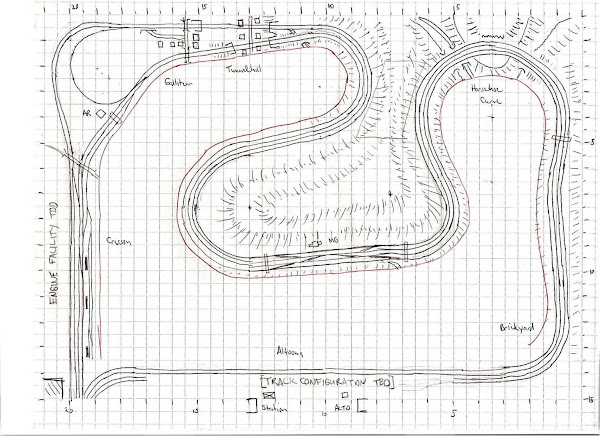The PRR called the area around Horseshoe Curve "the mountain" and the layout includes lots of wooded hillside, much of it above track level.
We came up with a different way to build "the mountain".
First step is to construct a plywood frame to rough in the overall contours.

Next, the plywood is filled in using a web of cardboard strips and covered with heavy paper.


The paper is painted black and in some cases, reinforced by plaster sheets.

Here, a couple of trains have snuck on scene right at the curve.
Finally, the black-painted paper is covered in Woodland Scenics foliage clusters. Lots and lots of foliage clusters.
We used to attach the clusters with hot glue but now use clear plumbing caulk. The caulk doesn't leave strings of glue on the scenery or burn marks on the crew. It is tacky enough to hold the clusters, even on our steep slopes. The caulk is spread on the paper about a square foot (one scale "acre") at a time. The clusters are pre-shredded (a great job to do while watching baseball) and the caulk remains tacky long enough to fill in the acre before it sets up.

Here's Mark planting away above MG tower.
One of the advantages of the plywood / cardboard / paper structure is that it is very easy to make changes. We already have done so in two spots on the layout. Each time it only took an hour or so.
Here's a bit of almost-finished scenery just below the curve.
















































